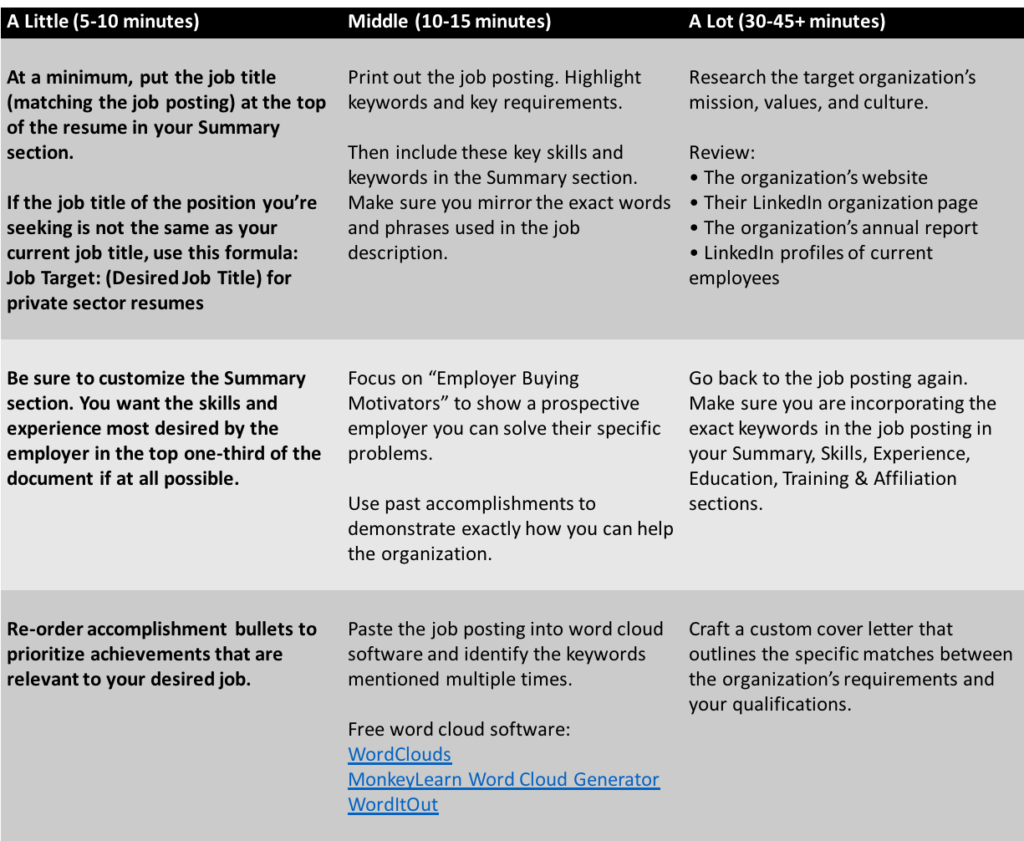You know you should keep your resume updated but do you actually do it? If not, September is the perfect time to do so. Designated “Update Your Resume Month,” you can get in the spirit by updating yours!
So, what should you do?
Here are 10 easy things for you to do:
- Review your existing resume; ensure that your current job is on your resume
- Remove jobs that are more than 10 or so years old; or at least put them in a category called Earlier Professional Experience (or something similar)
- Update your achievements; what have you done in your current position that had an impact on your employer? Did you save money? Increase productivity? Create a new way to do something?
- Add any new educational achievements; did you get a new degree? A new license of some sort? Professional certifications? Something else?
- Note any significant awards or industry honors. It adds to your credibility when you are recognized outside your organization.
- Include updated numbers. Did your staff size increase? What about your budget? Size of your territory/responsibility? Numbers help give your work context.
- Delete the words “responsible for;” just because you are responsible for something, it doesn’t mean you actually do it. It means that you should do it. It tells the reader nothing.
- Eliminate personal pronouns from your resume. Resumes should be written in first person implied—no personal pronouns. Started your sentences with active verbs (and no “s” at the end of them either!)
- Assess your Qualifications Statement; does it still reflect what you’re targeting? Include keywords? Make a compelling case for your candidacy? If not, tweak it.
- Check for typos you may have missed the last time you reviewed your resume.
Doing the above should take less than an hour. If you spend the time to keep your resume updated, you’ll be ready to go when that dream job becomes available!
You can check out some other Update You Resume Month posts from previous years below:



